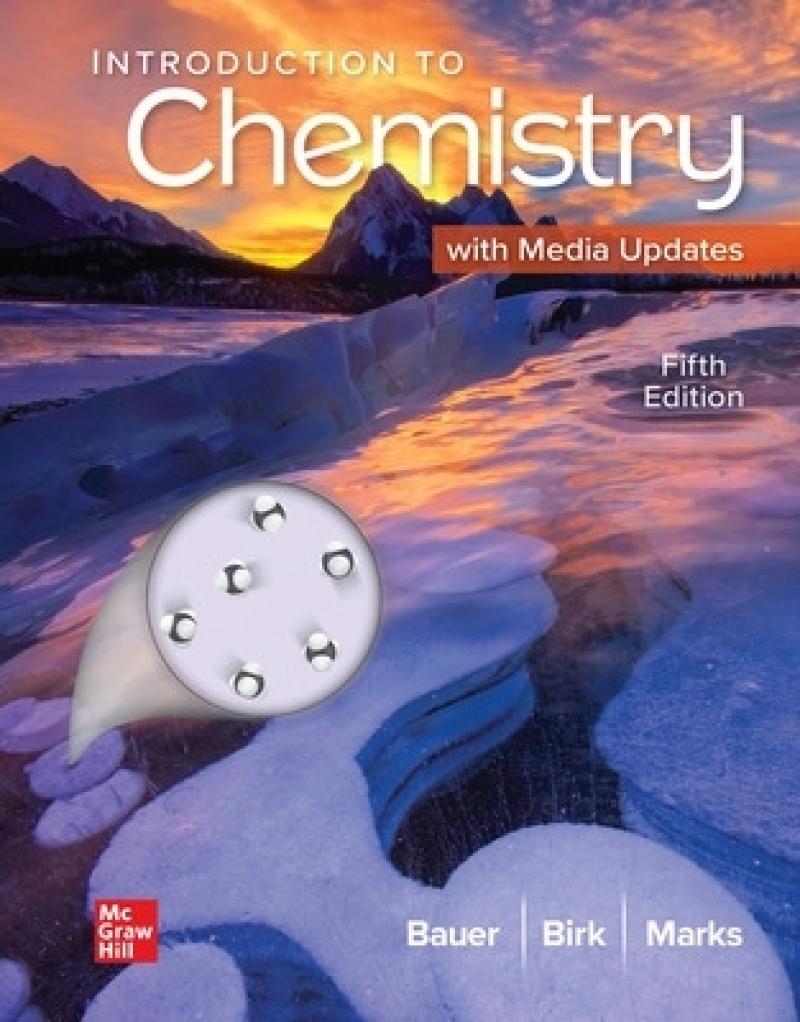Introduction to Chemistry, Fifth edition takes a conceptual approach to introductory chemistry. Chapters open with a scenario involving real-life students to connect abstract chemical concepts to students' lives. Math is introduced on a need-to-know basis. This conceptual approach first teaches the chemistry and then shows students how to use the math with the chemistry. We recognize how important it is for students to apply chemistry to their world and have added or expanded applications - especially medical- and environment-related applications - throughout the text, marginal notes, worked examples, and end-of-chapter problems.•Consider This features offer conceptual-in-nature questions at the end of worked examples. These questions prompt students to extend their understanding beyond the focus of the worked examples. •Key Concepts replace end-of-chapter summaries. Presented in outline form, they guide student discovery of the most important ideas discussed in each chapter.•Concept Review multiple-choice questions have been added to end-of-chapter questions and problems. Because most students in an introductory chemistry course will take multiple-choice exams, these questions provide them with an outstanding practice opportunity. The conceptual nature of these questions helps students develop deeper understanding and critical thinking skills. After each question, a follow-up question provides additional practice with the analysis of multiple-choice responses.•Four new elements have been named in the Revised Periodic Table: nihonium (Nh, element 113), moscovium (Mc, 115), tennessine (Ts, 117), and oganesson (Og, 118).•The Art Program is considered the best in the market. To help students connect verbal descriptions to molecular-level representations, the program uses symbols and zoomed-in art to show critical phenomena at a molecular level. •The problem-solving approach is supported by worked Example Boxes. Problem solving in chemistry is much more than algorithmic number crunching. It involves applying principles to solve problems. Conceptual problems require students to apply their understanding of concepts instead of just an algorithm. This text emphasizes underlying concepts when discussing numerical problems within in-chapter worked examples as well as end-of-chapter problems.The best approach to incorporating math involves development of associated math on an as-needed basis, with an emphasis on concepts that the problems are trying to illustrate. This text integrates need-to-know mathematical ideas that are important to chemists into conceptual discussions. •Math Toolboxes have been reworked and expanded, and now include accompanying end-of-chapter problems. •Toolbox Icons in the text margins point students to the appropriate review material. •The math reviews provided in the end-of-chapter Math Toolboxes are referenced within appropriate sections of the text.New or enhanced electronic methods to access the material include the ReadAnywhere app that allows students to access their ebook on mobile devices. Once chapters are downloaded, students can use the same tools available in the ebook, and notes and highlights will sync across platforms. The LearnSmart adaptive diagnostic learning system and Heat Maps constantly assess data to determine students' knowledge of the material, time spent answering questions, and percentage of correct answers. These features enable students to develop a strategically timed personal learning path adapted to what they have actively learned and retained. LearnSmart lets the instructor see exactly what students have accomplished and includes a built-in assessment tool for graded assignments.
Les mer
1 Matter and Energy 2 Atoms, Ions, and the Periodic Table 3 Chemical Compounds 4 Chemical Composition 5 Chemical Reactions and Equations 6 Quantities in Chemical Reactions 7 Electron Structure of the Atom 8 Chemical Bonding 9 The Gaseous State 10 The Liquid and Solid States 11 Solutions 12 Reaction Rates and Chemical Equilibrium 13 Acids and Bases 14 Oxidation-Reduction Reactions 15 Nuclear Chemistry 16 Organic Chemistry 17 BiochemistryAppendicesA Useful Reference Tables and FiguresB Math ToolboxesC Answers to Consider This Questions and Practice ProblemsD Answers to Selected Questions and ProblemsGlossary Index
Les mer
Produktdetaljer
ISBN
9781259911149
Publisert
2018-02-28
Utgave
5. utgave
Utgiver
Vendor
McGraw-Hill Education
Vekt
1960 gr
Høyde
282 mm
Bredde
224 mm
Dybde
31 mm
Aldersnivå
U, 05
Språk
Product language
Engelsk
Format
Product format
Heftet
